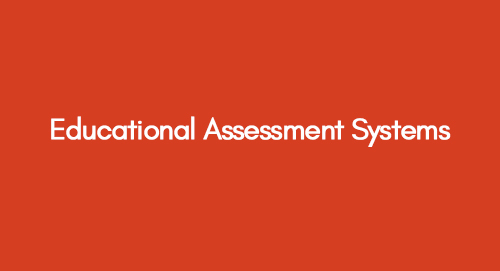
Material testing and manufacturing processes
February 1, 2021
Dynamics and Control
February 1, 20211. Introduction
1.1. Limit State Design (LSD)
Limit state design is one of the famous design methods used in structural engineering. The structure condition beyond which the relevant design criteria cannot be fulfilled is called a limit state. The actions carried out on the structure including degree of loading are also refer to the limit state design. The limit state design of a structure is found to be proportioned to attain the sustainability of all actions which are about to happen and to remain suitable for use with high reliability through every state of limit. The design technique has building codes for the implicit definition of the reliability levels through their prescriptions (Cheng et.al, 1996).
2. Principles
The basic principle of the ultimate limit state designs is to safe the structure and people around it. The most common examples of the limit states include ruptures, excessive deformation, loss of stability, loss of equilibrium, fatigue and transformation of the structure and the mechanisms.
The designs involved in limit state structures verify the related limit states that are not exceeding their limits in any situation of the specified design. The load and structural models are used to verify the design through three variables including properties of the material, geometrical data and actions (Fricke et.al, 2000). For each design situation the actions can be classified through the duration they take to be completed.
3. Basic concepts
3.1. Structure Design Situations
The conditions under which the structure can be found at different moments throughout its working life are called design situations. There are numerous situations including persistent, temporary, transient, seismic, exceptional, and accidental and many more (Fico et.al, 2007). Many of these situations include the explosions and fire which causes building damage. Society is seem to accept such situations that require necessitating repair, however situations including damage due to wind and snow are not accepted yet. Partial factors have been defined for the seismic and accidental situations as 1.0 which is lower than the transient and persistent situations having factor 1.2 to 1.5 (Sayed, 2006). The situations with high factors are more likely to occur (Reese, 1973). Different design situations have been developed that may help to determine the reliability levels that designs offer and actions required to deal with various types of the design situations.

Figure 1: limit state design overview
3.1. Ultimate limit states
The safety of structure and people is dealt by the ultimate limit states. There are three types of the ultimate limit states including equilibrium loss, stability loss and fatigue failures.
3.2.1. Limit state equilibrium loss
The static equilibrium is studied under limit state named EQU (equilibrium loss). The term has been defined as a structural equilibrium loss which deals with the minor variations in the distribution and actions are important to consider while material strength is not governing significantly (Reese, 1973). The limit state is less likely to occur under certain condition as follows.
Limit state EQU does not occur when the destabilizing design effects of actions Ed,dst are less than or equal to the stabilizing design effects Ed,stb
Where
Ed, dst =Destabilizing design effects of actions
Ed,stb= Stabilizing design effects

Figure 2 :equilibrium loss limit verification
A motorway gantry can be considered as an example in this case as shown in figure 3 (Meier, 1992). The structure is subjected to the horizontal design wind load which is
The load is acting at a height h = 8m from the gantry base. The overturning moment of the design about the structure toe is as follows
The stabilizing moment of the design can be found for gantry’s self weight is
The base width is
The moment can be found by using following expression
It has been recommended to avoid the limit state EQU in the direction of wind as

Figure 3: Motorway gantry subjected to wind load
Ratio of the destabilizing and stabilizing effects is termed as a utilization factor.
The design requirements are important to be satisfied for a structure. The utilization factor has to be equal to or less than 100%. The reliability of the structure is less for the utilization factor greater than 100%
3.2.2. Limit state excessive deformation
The limit that deals with the excessive deformation and rupture is called limit state STR. The conditions required to prevent the structure from failure include
Where
= design load
= design resistance

Figure 4: limit state STR verification
The motor way gantry has been taken as an example to understand the bending moment induction under its self weight as shown in figure 5.

Figure 5: Bending moments acting in the motorway gantry
The limit state for rupture and excessive deformation can be avoided if
And
The utilization factor in this case can be calculated as follows
The structure is required to have a utilization factor lesser than 100% to avoid failure.
3.2.3. Limit state fatigue
The localized and progressive damage in structure is usually termed as fatigue in material sciences. The phenomenon is related to the bridges and roads when they subjected to the cyclic loading. Subject has significant importance for aluminum structures (Nethercot, 2001).
3.2.4. Serviceability limit states
The states that are related to the functioning of the structure are called serviceability limit states (Zelesov, 1973). The limit states can be avoided under the conditions including

Figure 6: serviceability limit state verification
The maximum settlement a gantry can tolerate is adjusted to be equal to
However the settlement calculated under the action of structure design is
In this case the limit of serviceability can be avoided easily, since the condition is satisfied.
The utilization factor for the limit of serviceability can be defined as the ratio of the effect of actions to its corresponding limiting value:
For the given values the utilization factor can be calculated as follows
The utilization factor is requiring being lesser or equal to 100% for a structure to be more serviceable and to avoid failures.
4. Conclusion
The discussions have shown that the load effect in the limit state design structures is required to be determined because of its probability to exceed the favorable situations during specified time duration. The utilization factor can be determined to avoid the limit state situations which lead to the structural failure.
References
- Cheng, J.J.R., Elwi, A.E., Grodin, G.Y. & Kulak, G.L. (1996), Material testing and residual stress measurements in a stiffened, steel plate. In Strength and Stability of Stiffened Plate Components, Ship Structure Committee, Washington, DC, p-399
- Fico, R., Prota, A., and Manfredi, G., (2007), “Assessment of Eurocode-like
Design Equations for the Shear Capacity of FRP RC Members”, Journal of
Composites Part B: Engineering, Article in Press, pp. 110-163
- Fricke, W., Berge, S., Brennan, F., Cui, W., Josefson, L., Kierkegaard, H., Kihl, D., Koval, M., Mikkola, T.P., Parmentier, G., Toyosada, M. & Yoon, J.H. (2000), Fatigue and fracture, Report of Technical Committee III.2, Proceedings of the 14th International Ship and Offshore Structures Congress, Nagasaki, Japan, Elsevier, Amsterdam, pp 323–39.
- Meier, U., 1992, “Carbon Fiber Reinforced Polymers: Modern Materials in
Bridge Engineering,” Structural Engineering International, Journal of the International Association for Bridge and Structural Engineering, V. 2, No. 1,
- 7-12; 151
- Nethercot, D.A. (2001). Limit states design of structural steelwork, Third Edition based on Revised BS 5950: Part 1, 2000 Amendment. Spon Press, London, pp. 120-150
- Paik, J.K. & Pedersen, P.T. (1996), A simplified method for predicting the ultimate compressive strength of ship panels. International Shipbuilding Progress, 43: pp 139–157.
- Reese, R.C., (1973) Safety requirements in structural design and ACI 318-71, Journal of the American concrete institute, Vol. 70, No. 3, March 1973, pp. 190-198
- Sayed, A. K., Salakawy, E. F., and Benmokrane, B. (2006) “Shear Strength of FRP-Reinforced Concrete Beams without Transverse Reinforcement” ACI
Structural Journal, 2006, V. 103, No 2, pp. 235-243
- Zelesov, A.S., (1973), Methods of design for reinforced concrete structures Used in the USSR, Journal of the American concrete institute, Vol. 70 No. 10, October 1973. pp. 682-686
Get 3+ Free Dissertation Topics within 24 hours?



























